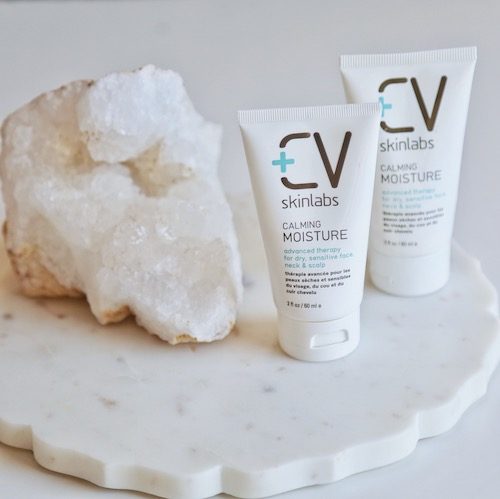
Dry, itchy skin is irritating enough on its own.
But if it is the result of diabetes, it can be even more problematic and difficult to control.
That doesn’t mean you can’t enjoy healthier-looking skin. You just need to take a few extra self-care steps like those listed below.
What is Diabetic Dry Skin?
Diabetic dry skin is a result of diabetes—a chronic health condition that results in high blood sugar levels.
When you eat and drink, the body takes the ingredients in those food items and converts them into energy your body can use. The body’s preferred form of energy from food is glucose, which is a form of sugar. Much of what you consume is broken down by the body into glucose.
That glucose then circulates in your bloodstream. When you’re healthy, the body releases insulin, which is a type of hormone that ushers the glucose into the cells where it’s needed.
If you have diabetes, your body either doesn’t make as much insulin as it needs for the job, or it can’t use it as well as it should. The result is too much glucose in your bloodstream—high blood sugar.
The first step to keeping skin healthy is to try and control your diabetes. There are many effective treatments today for diabetes that can help you keep your blood sugar levels under control. Without treatment, diabetes can cause long-term health problems like heart disease, nerve damage, and eye issues.
How Does Diabetes Affect the Skin?
When blood sugar levels are too high, they can damage all areas of the body, including the skin. High blood sugar levels can cause the skin to lose moisture and become dehydrated, resulting in dryness, itching, scaling, and skin cracking. The Centers for Disease Control and Prevention (CDC) states that skin changes are one of the most common signs of diabetes.
That’s because the skin is the largest organ in the body, and it’s packed with nerves and blood vessels. Diabetes affects nerves and blood vessels throughout the body, so the effects quickly show up on the skin. Damage to blood vessels and nerves also affects circulation, potentially leading to changes in skin texture, appearance, and the ability to heal and defend against infections.
Here are some common symptoms of diabetic dry skin. If you’ve already been diagnosed with diabetes, these are signs that it is damaging your skin.
Extremely dry, itchy skin
One of the most common symptoms of diabetes to show up on the skin, dryness is the result of high blood sugar levels in the blood. This causes the body to lose too much fluid through urination and evaporation through the skin. Poor circulation, too, can cause unrelenting itchy skin, particularly in the lower legs and feet.
Cracked, scaly skin leading to infections
People with diabetes are more vulnerable to skin infections. The outer barrier of the skin is compromised, which allows microbes like bacteria to more easily penetrate the skin and create redness and inflammation.
When skin is overly dry, it can crack and peel. These cracks can increase the risk of infection. Scratching can also create small openings in the skin where skin infections can proliferate. You may notice that your skin is easily irritated and is slow to heal.
Shin spots
These are brown spots and sometimes lines that form on the shins, though they may also develop on the arms, thighs, and trunk. They may look a little like age spots.
Yellow, reddish, or brown patches on your skin
You may notice small raised bumps that look like pimples at first. Over time, these bumps will turn into patches of swollen and hard skin.
Dark areas of skin that feel like velvet
This often occurs in the creases of the neck. A dark patch or velvety band of skin develops that may be a sign you have prediabetes.
Hard, thickening skin
This is usually the result of diabetes that has remained untreated for years. The fingers become stiff and a tight, waxy appearance develops on the back of the hands. Hard, swollen-looking skin may also appear on the forearms, upper arms, upper back, shoulders, and neck.
Open sores and wounds
If you have diabetes, you may develop sores and open wounds on your feet and legs. These are called diabetic ulcers, and they can take a long time to heal. They are the result of poor circulation and nerve damage caused by diabetes.
Allergic reactions to medications
People with diabetes may have allergic reactions to oral or injectable diabetes medications. Possible symptoms may include a rash, hives, swelling, and redness.
How to Manage Diabetic Dry Skin
The most important thing when you have diabetes is to control your blood sugar levels. Your doctor will help you determine the right medication regimen as well as the right diet and exercise activities to manage the disease.
It’s also important, though, to step up your skincare routine. Understand that your skin is fragile and vulnerable to problems because your body is fighting this disease. You are more likely to have skin that has a compromised outer barrier, so you have to take steps to help it heal and keep it strong.
Researchers published a study on diabetic skin conditions in 2023, and they warned: “Skin care, especially foot care, is crucial in diabetes.” They add that lotions and creams can help prevent skin-related complications.
You can do a lot to help your skin stay healthy.
How about using our products? CV Skinlabs products are dermatologist recommended with clinically proven ingredients to relieve dryness, reduce redness, and calm itching. Our formulas were created specifically for those with dry, itchy, irritated compromised skin.
Your Skin-Care Routine to Soothe Diabetic Dry Skin
1. Keep your blood sugar levels under control.
Follow your doctor’s instructions to manage your blood sugar levels. Keeping your blood sugar in check benefits your skin and the rest of your body.
2. Avoid hot water.
Hot water strips the skin of moisture and leaves it parched. Make a habit of using lukewarm water when washing and bathing.
3. Use mild cleansers.
Choose mild and gentle soaps that are free of harsh chemicals and heavy fragrances. Wash your skin twice a day—no more if you can help it. Washing too often can exacerbate dry skin.
4. Moisturize frequently!
Remember that your skin is more likely to lose moisture more quickly than normal skin. Get used to applying moisturizer frequently! Apply it after a bath, after washing your hands, and before going to bed.
Moisturize at least twice a day – especially your legs and feet (more when you’re washing frequently), as that will help bolster your skin’s defenses and encourage healing. It will also improve skin’s appearance, smoothing dry rough patches. When skin is dry and itchy, especially at night, try our Rescue & Relief Spray. It will instantly calm the itch and provide soothing moisturizing relief.
5. Choose a quality moisturizer.
Just any old moisturizer won’t work. That’s because many are made with cheap, chemical ingredients with added fragrances that make them smell good. Unfortunately, these cheap and synthetic ingredients can further damage your skin and increase sensitivity.
You need lotions and creams with hydrating, safe ingredients that will not only moisturize your skin but help protect it from damage. We recommend our Calming Moisture and Body Repair Lotion for long lasting relief of extremely dry, itchy, cracked skin. Apply Calming Moisture to your face and neck every morning and night, and apply Body Repair Lotion to the skin on the rest of your body after bathing and before going to bed at night.
Both of these nourishing products help tame inflammation and reduce itch while replenishing and soothing dry, irritated skin. They also include protective antioxidants, anti-inflammatories, ceramides, and extracts that encourage healing and help strengthen and protect the skin’s barrier.
6. Prevent dry cracked skin, and treat minor cuts, scratches and scrapes carefully.
Keeping skin well moisturized helps prevent cracks that lead to infection. Dermatologists recommend that people with diabetes check their feet and legs daily. If you notice small scrapes and cuts, it’s important to treat them right away. If you don’t, they could develop into wounds that resist healing.
To help prevent dry cracked skin and heels, we recommend our Restorative Skin Balm. It will help lock in moisture, instantly soften dry cracked skin, and keep skin protected, while providing speedy healing of minor cuts, scratches and scrapes.
Seek medical help you develop a wound that fails to heal or worsens.
7. Consider using a humidifier.
If you live in a dry climate, consider adding a humidifier to your bedroom. It will add moisture to the air while you’re sleeping, helping you wake up with more moisturized skin.
Without a humidifier, a dry climate saps moisture out of your skin, making dryness worse.
How do you manage diabetes-related dry, itchy skin?
Featured image courtesy of Engin Akyurt via Pexels.








